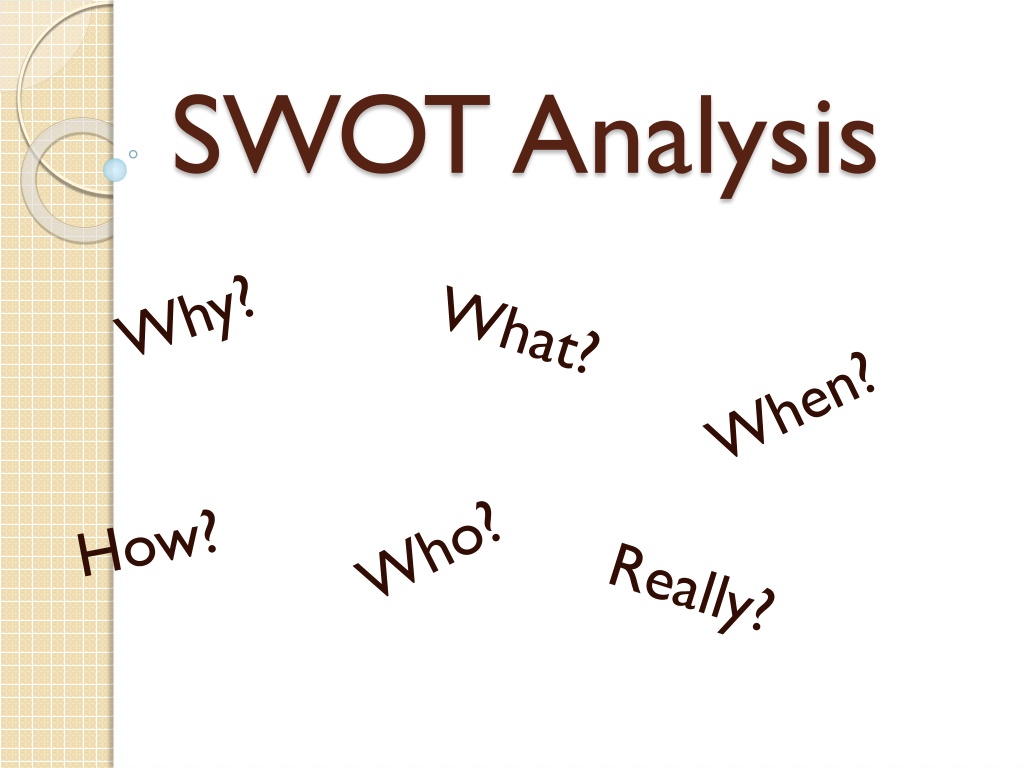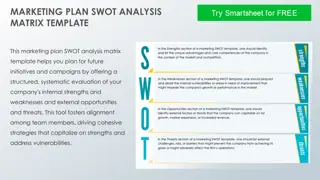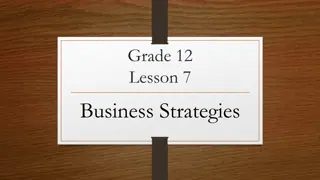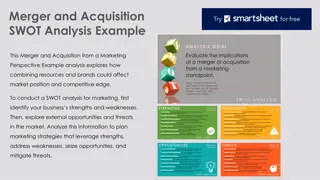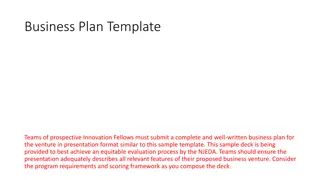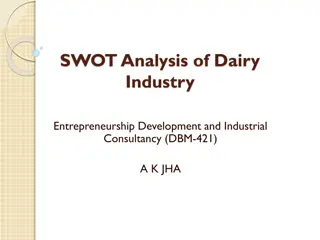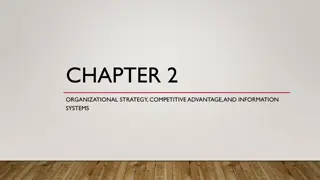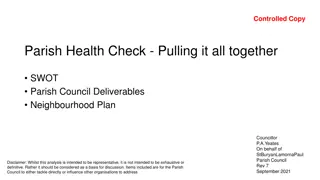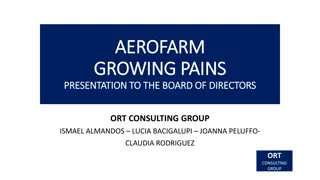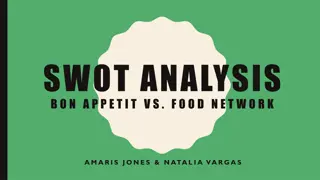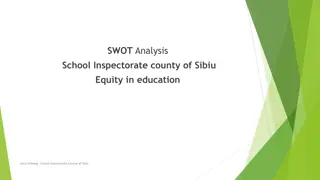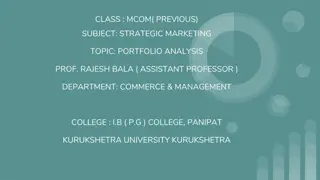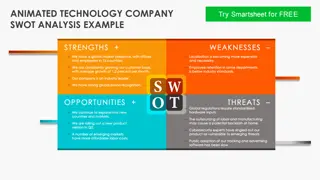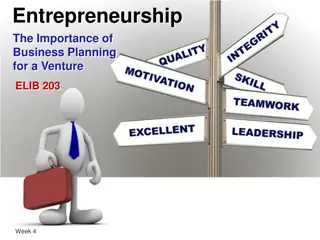Understanding SWOT Analysis for Business Success
SWOT Analysis is a vital tool for auditing an organization and its environment, helping to identify internal strengths and weaknesses, as well as external opportunities and threats. By leveraging SWOT, businesses can capitalize on their strengths, address weaknesses, seize opportunities, and mitigate threats, ultimately adding value to products and services. The analysis should be performed at least once per year and can aid in various aspects such as staffing, organizational structure, and operational efficiency.
Download Presentation

Please find below an Image/Link to download the presentation.
The content on the website is provided AS IS for your information and personal use only. It may not be sold, licensed, or shared on other websites without obtaining consent from the author. Download presentation by click this link. If you encounter any issues during the download, it is possible that the publisher has removed the file from their server.
E N D
Presentation Transcript
What is SWOT? Tool for auditing an organization and its environment First stage of planning Helps marketers to focus on key issues. SWOT stands for Strengths, Weaknesses, Opportunities, and Threats. Strengths & Weaknesses = INTERNAL factors Opportunities & Threats = EXTERNAL factors
Who Uses It & How? Managers of a business Used to: build on strengths minimize weaknesses seize opportunities counteract threats Focus on turning weaknesses into strengths, and our threats into opportunities (feeds into marketing objectives). Match internal strengths with external opportunities
Why Use It? The main purpose of a SWOT analysis is to add value to products and services Doing this can help a business recruit new customers, retain loyal customers, and extend products and services to customer segments over the long-term.
When to Use It? At least once per year When individual issues need to be addressed: staffing issues business culture and image organizational structure advertising financial resources operational efficiency
Are You Getting It?? What does SWOT stand for? Which elements of SWOT are external factors? Who uses a SWOT? How is SWOT used in a business? What is the main purpose of a SWOT? When should a SWOT Analysis be performed?
A SWOT strength could be: Special marketing (or other) expertise A new, innovative product or service Location of a business Being a market leader Quality processes and procedures Any other aspect of a business that adds value to the product or service
Which one is a STRENGTH for McDonald s? A Unhealthy food B Lawsuits against McDonald s C The idea to add home meal delivery D Having the largest fast food market share in the world
A SWOT weakness could be: Lack of marketing (or other) expertise Undifferentiated products or services (i.e. in relation to your competitors) Location of your business Poor quality goods or services Price that is too high Damaged reputation
Which one is a WEAKNESS for McDonald s? A High employee turnover B Lawsuits against McDonald s C $2 million advertising budget D Changing customer habits and new customer groups
A SWOT opportunity could be: A developing market such as the Internet Mergers, joint ventures or strategic alliances Moving into new market segments that offer improved profits A new international market A market vacated by an ineffective competitor Technology
Which one is an OPPORTUNITY for McDonald s? A Local fast food restaurant chains B The idea to add home meal delivery C Existing partnerships with many big brand names D Negative publicity
A SWOT threat could be: A new competitor in your home market Price wars with competitors A competitor has a new, innovative product or service Competitors with superior access to channels of distribution Taxation is introduced on your product or service Changes in technology Weather Regulation & deregulation
Which one is a THREAT for McDonalds? A An unhealthy food menu B Brand recognition valued at $40 billion C Creating new menu items for changing customer habits and new customer groups D Trend towards healthy eating
Simple Rules for a Successful SWOT Analysis Be realistic about the strengths and weaknesses of your organization. It should distinguish between where your organization is today, and where it could be in the future. Be specific--avoid grey areas. Always apply SWOT in relation to your competition (i.e. better than or worse than your competition). KISS! Keep it short and simple --avoid complexity and over analysis SWOT analysis is subjective.
